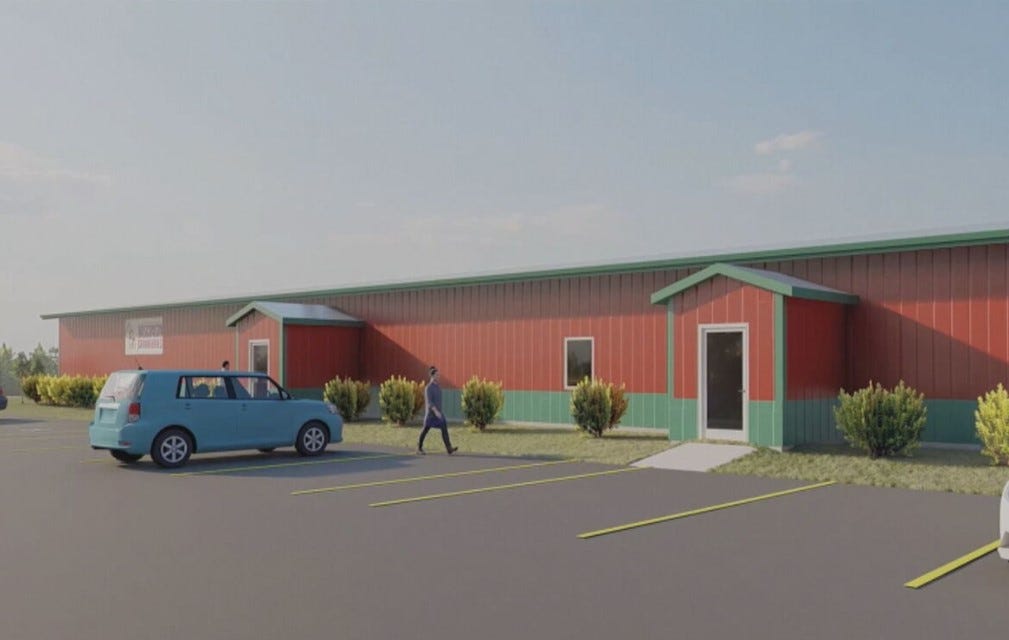New WI Cranberry Research Station is a "fruitful partnership"
 Colleen Kottke
Colleen Kottke
In 2014, the Wisconsin Cranberry Research and Education Foundation launched a fundraising campaign to support the purchase of a property to convert to a world class facility for cranberry research and education.
On Thursday, Nov. 5, the group hosted a virtual groundbreaking of their new Research and Education Center at the Wisconsin Cranberry Research Station in Jackson County during a Zoom presentation.
While no one turned any shovelfuls of dirt at the worksite, an impressive roster of stakeholders including state legislators, USDA Agricultural Research Service (ARS) and University of Wisconsin officials, and Wisconsin DATCP Secretary designee Randy Romanski lauded the importance of the facility and the partnerships that made it possible .
"We want to celebrate the leadership of the Foundation and the grower community for having the foresight to recognize the needs of this and for the future generations of Wisconsin cranberry growers," said WCREF Executive Director Tom Lochner.
At the onset of the project, the board set a goal of $750,000 of private capital, of which $690,000 has been secured from the private sector. U.S. Senator Tammy Baldwin secured an additional $1 million through the USDA's ARS. Former U.S. Rep. Sean Duffy also helped to raise funds and build a coalition with growers in the states of Wisconsin, New Jersey and Massachusetts.
"To think that Wisconsin, the largest producer of cranberries in the nation, doesn't have a research station but those other states do, that should be a problem for us," Duffy said via a Zoom conference call.
Wisconsin cranberry growers currently produce more than half of the nation's crop of cranberries grown on 21,000 acres across 20 counties in central and northern Wisconsin. Growers are expected to harvest 5.6 million barrels of the red fruit this fall...making it the 26th consecutive year that Wisconsin has lead the nation in cranberry production.
To ensure that Wisconsin continues to keep their competitive edge in the market, the Foundation began searching for a cranberry marsh to create research plots and conduct variety trials. After looking over 24 sites, they purchased the 140-acre Robinson Creek Cranberry farm in Jackson County that includes 33 acres of cranberry production.

The initial earthwork was completed in 2019 with 20 acres set aside for commercial beds constructed according to current growing standards with 2 acres designated for variety trials.
Local growers turned out to help during Phase One, donating vines, labor and equipment to help plant the beds. The USDA ARS provided substantial funding for the renovation project, transforming the marsh into a viable commercial operation while supporting research space and space for a variety of trials.
The facility will also hold a work stations, simple labs and offices for researchers as well as an education center to be used for industry training, workforce development, school groups and other education programs. The University of Wisconsin Madison worked with industry groups to secure $500,000 toward the building with an additional $200,000 coming from private donations.

While on-the-farm research has been the backbone of the University's work with cranberries for many years, UW-Madison Professor Jed Colquhoun says the new research station represents a "wonderful complement to that portfolio that will greatly advance cranberry production".
"In that station we will be able to take risks that we wouldn't necessarily want to do on a grower's farm," he said. "And in my experience, the greatest advances in research come from taking the biggest risks. These advances in turn lead to our greatest innovations that can impact in a positive way our production and quality."
Colquhoun says the research center will open doors for research advances to product and production innovation as well as increased variety quality via improved genetics. Researchers will also study pest management thresholds that reduce risk along with ways to protect the state's water quality.

"The cranberry industry is clearly important to Wisconsin, not just from its economic impact, but also its cultural impact," said Steve Ackerman, vice chancellor for research and graduate education at UW-Madison. "This partnership between UW-Madison and the Wisconsin Cranberry Research and Education Foundation is an excellent demonstration of how the university and a Wisconsin industry can work together to move forward new research whose application supports that industry."